Fezz Lybra Parallel Single-Ended 300B integrated amplifier
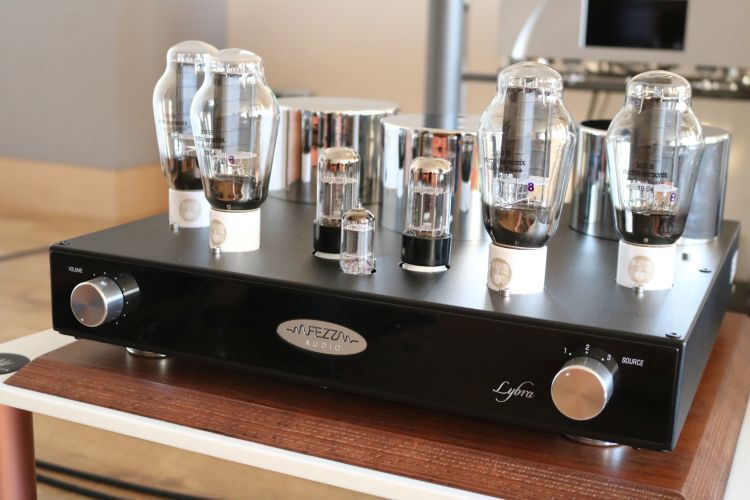
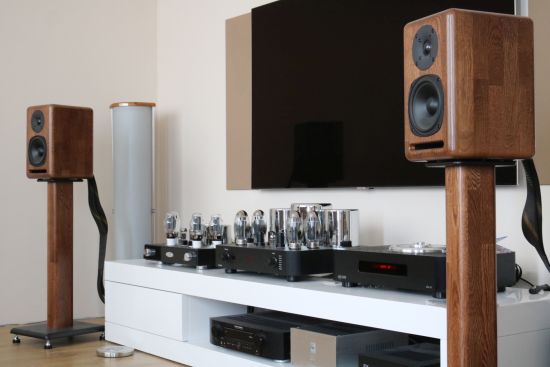
Listening with Xavians
At this stage, the Lybra has played a total of around 16 hours and now it’s time to assess the amp in my secondary system using Xavian La Perla Esclusiva loudspeakers. With an Antipodes EX serving as a Roon endpoint connected to the Ayon S10 II tube CD player/DAC with FoilFlex interlinks and speaker cables, the Lybra is connected in place of the Ayon Spirit III tube amp. The power cable is again my standard Belden configuration with a Bals schuko and an Oyaide C-004 IEC connector.
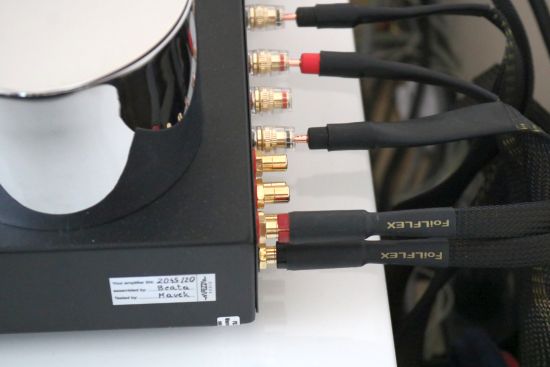
I’ve not yet got a good handle on the Lybra’s warm-up time. Maybe that’s because it sounds so well-balanced and uplifting, in complete control and so focused and clean, right from the start? What you do get after about 30 minutes of playing is that the sound becomes a little grander and slightly more voluptuous but it remains tight and fully in control even when fully warmed up. The difference is certainly subtler than I’ve heard it with some other tube amps.
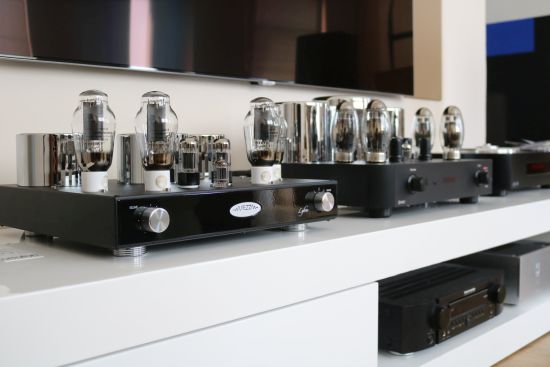
When comparing other amplifiers with the Ayon, no matter if they are tube- or transistor-based, they usually sound less solid and robust, oftentimes significantly so. Well, not this time! Amazingly, the 15-watt SET amp manages to sound almost as powerful and robust in the bass while being perhaps even tighter and articulate. It’s remarkable given how small the Lybra’s input- and output transformers are relative to the Ayon’s huge water tank-sized pillars but this is some of the very best bass I’ve heard from a tube amp. More specifically, the Lybra’s bass doesn’t have a tube character at all. It’s simply as upbeat and incisive or as solid and weighty as the recording requires it to be.
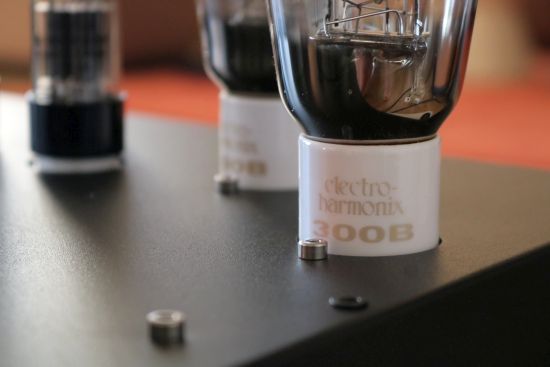
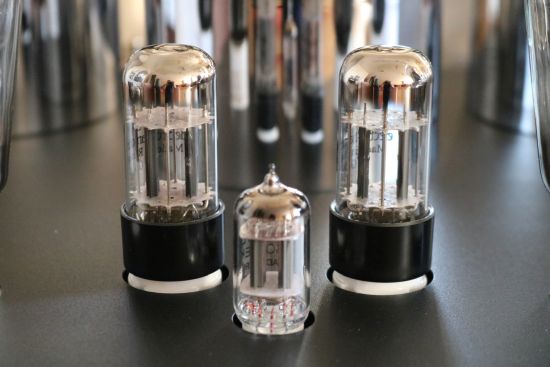
The overall sound of the Fezz Lybra amplifier is very neutral and transparent, more so than the decidedly sonorous and earthy Ayon. What also stands out in comparison to the Ayon is that the Fezz is more highly refined and has subtler and airier treble. And as becomes clear from my tapping feet with every track that I play, it also has very good rhythmic capacities. In spite of its low power rating, the amplifier simply never seems to lose control, not even when used with inefficient or difficult speakers. Of course, 15 watts of power ultimately imposes a limit on how loud you can play, but with the Xavians and my listening preferences, I never found that limit.
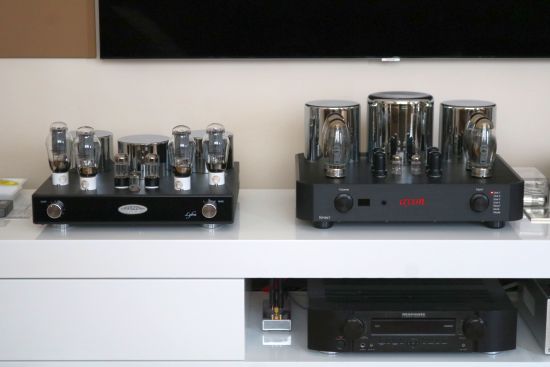
The Lybra is superbly even-handed and seems to have a very high damping factor but as a result, one could perhaps also describe it as being not characterful enough. Of course, whether or not an amplifier should have any character is a personal matter and it depends on what one expects from a (tube) amp. The Lybra is not creamy or rich, it isn’t warm or cuddly but neither is it cool or clinical. The important thing is that I find it to be convincing, involving and lyrical. Given the quad of 300B’s, one might think that the amp might be rose-tinted but in my experience SET amps do not generally sound sweet or particularly lush unless they are underpowered or matched with incompatible speakers. The Lybra actually does not really sound like a typical tube amp at all and, unless one is looking specifically for a certain lushness or sweetness, that is a good thing. There is just none of the transformer-induced hysteresis which makes for the well-known round tube bass nor any discernible ripening of textures anywhere in the frequency range. The interesting thing about the Fezz is that it is very tight and articulate, very well-controlled, very neutral and very linear, but still, it manages to avoid having any of the grayness or electronic signature that is often associated with transistor amplifiers. Especially in the midrange, there is an unmistakable charm that you just don’t usually get with transistors. Yet, you do get bass that is as fast and articulate as the best transistor amps I’ve used in this system. There is a careful balance between neutrality and smoothness that makes the amp thread a very fine middle path between a typical transistor sound and a typical tube sound.
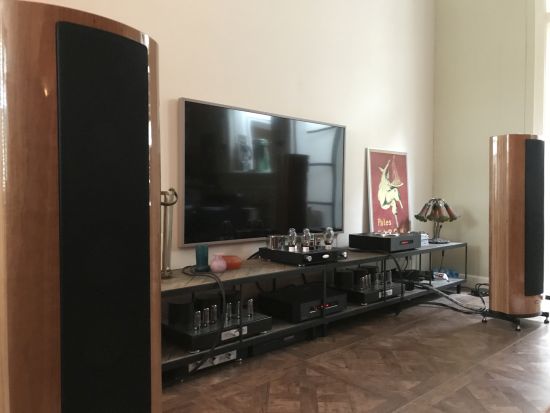
Change of scenery
The next listening session was at meneer Buis’ residence. Jan earned his nickname “Mr tube” some time ago following his habit of bringing over tube amplifiers of all sorts to my place for listening comparisons but these days, the tables are more or less turned. And so, I thought it fitting to bring the Lybra with me when visiting him. Jan changes speakers frequently but now was a particularly good time because at this moment he uses the Ayon Falcon-S which are very easy to drive and thus should be ideal for the Lybra.
Before this session, the Lybra had been playing music for a total of around 36 hours. In the context of an Ayon CD-T CD transport with Ayon Sigma DAC, the Lybra was connected via Straightwire Crescendo II interlinks, Driade Flow 405 speaker cables and the very same Belden power cable.
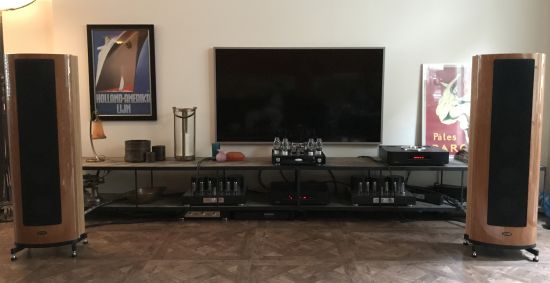
In this system, again, the amp sounds very linear and transparent, with remarkable solidity and power and with superbly articulate bass. But with these speakers and in this setting, the balance is just a little bit too lean. The overall feeling is of an overly controlled sound. It’s as if the amplifier has too much power or a massive damping factor. Although technically immaculate, the performers remain locked in a sort of restraint while the soundstage doesn’t really move or flow and this leads to a fascinating presentation that nevertheless remains cerebral and does not really induce emotional involvement.
While not a good match, this is still an interesting result because it illustrates perfectly that one simply cannot assemble a system based only on specifications. The Lybra should theoretically work beautifully with these speakers but apparently their open and direct character does not play ball with the very tight and neutral Lybra. Jan’s WLM tube amps (now Trafomatic) are indeed very different, quite voluptuous, rich and relaxed, even more so than MP’s Jadis amplifiers. After going back, though, Jan wasn’t entirely happy either, for now, it was also very obvious what the Lybra offers over the WLM’s.
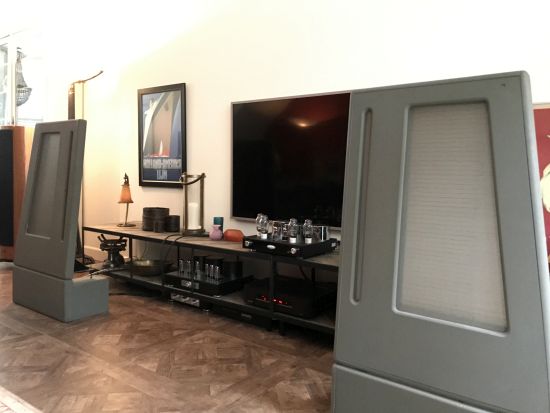
Apogee Stage
While we were in a playful mood, we decided to set the Ayons speakers aside and replace the Apogee Stage full-range ribbon speakers that had been set aside for some time now, given that Jan’s WLM amps had trouble driving them properly. Knowing that the Fezz has no issues with my Magicos, we figured why not go crazy! The Stages are nowhere near as difficult as Divas, the Full Range or the Scintilla but due to a double woofer membrane and the designers’ desire to make them full-range in spite of their diminutive size, they are actually harder to drive than Duetta Signatures.
Knowing full well that the Fezz is anything but a natural match for these speakers, we just went ahead and fired it up. Well, I’ll be… How is this possible? Not only did the Apogees eclipse the Falcons’ performance with either amplifier, but they also threw a much larger soundstage and created an immediately engaging performance, rhythmically, lyrically and emotionally. On top of this, the speakers had significantly deeper bass (which is admittedly probably room-related) and an overall more linear presentation. Go figure. This was a 15-watt amplifier? We were absolutely flabbergasted.
When I walked to the amplifier to turn up the volume I noticed that it was already at 11 o’clock. Raising it further did increase the volume slightly but beyond the 12 o’clock position started to introduce compression. Apparently, the amp was now playing at its maximum output. But apart from the volume setting, there was absolutely nothing that indicated that this was the case. The amp sounded simply unflappable and utterly fantastic.
For some time while packing in the amplifier for its transport back to my place, Jan kept commenting on “what a nice little amp the Fezz is”.
There’s one more speaker pair to be tried with the Fezz and this is the Qln Sonora, a very interesting, high-sensitivity, full-range, bass-reflex design. And as I would learn, this is a match made in heaven. But before I go there I’d like to address a couple of accessories that were delivered along with the amplifier.
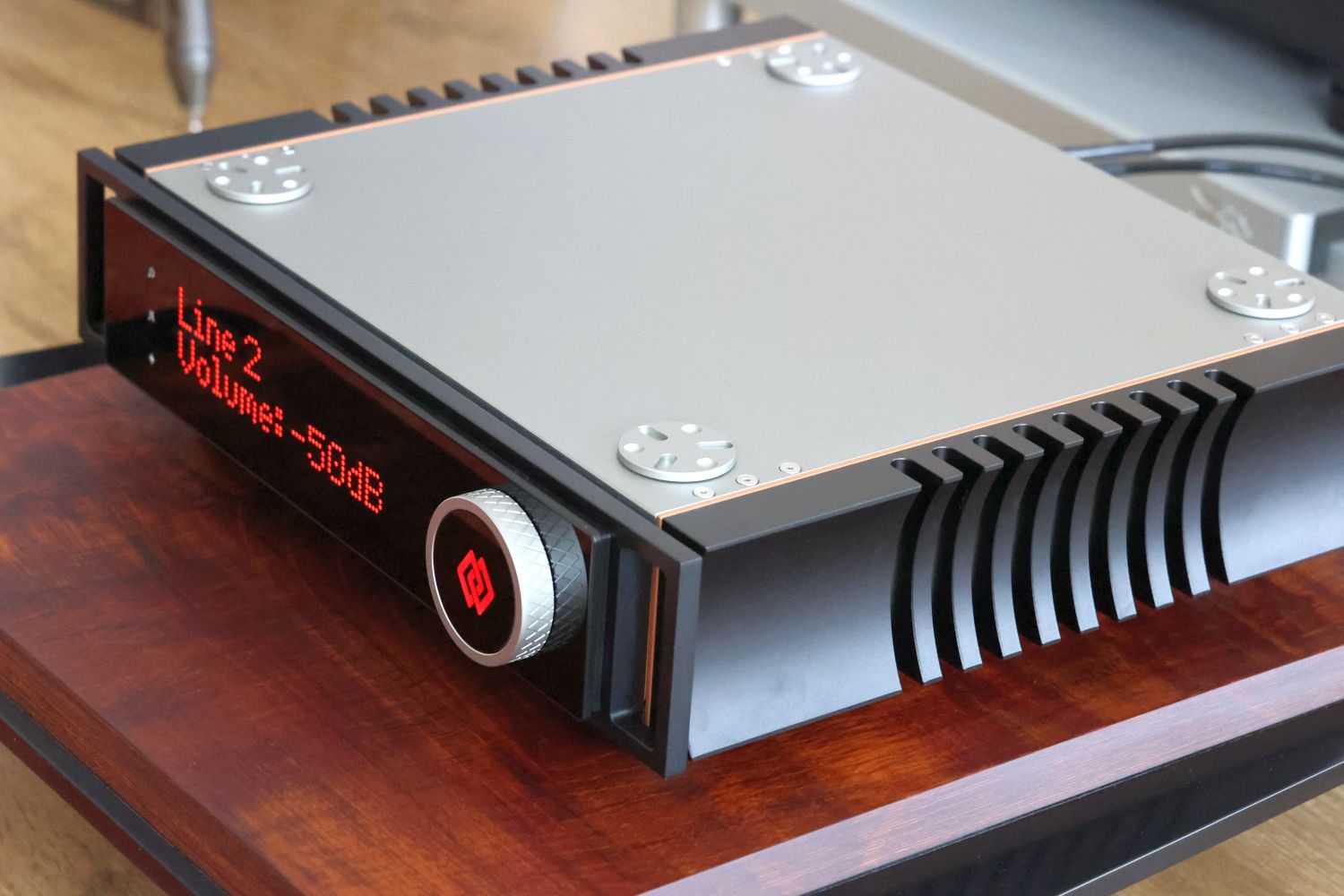
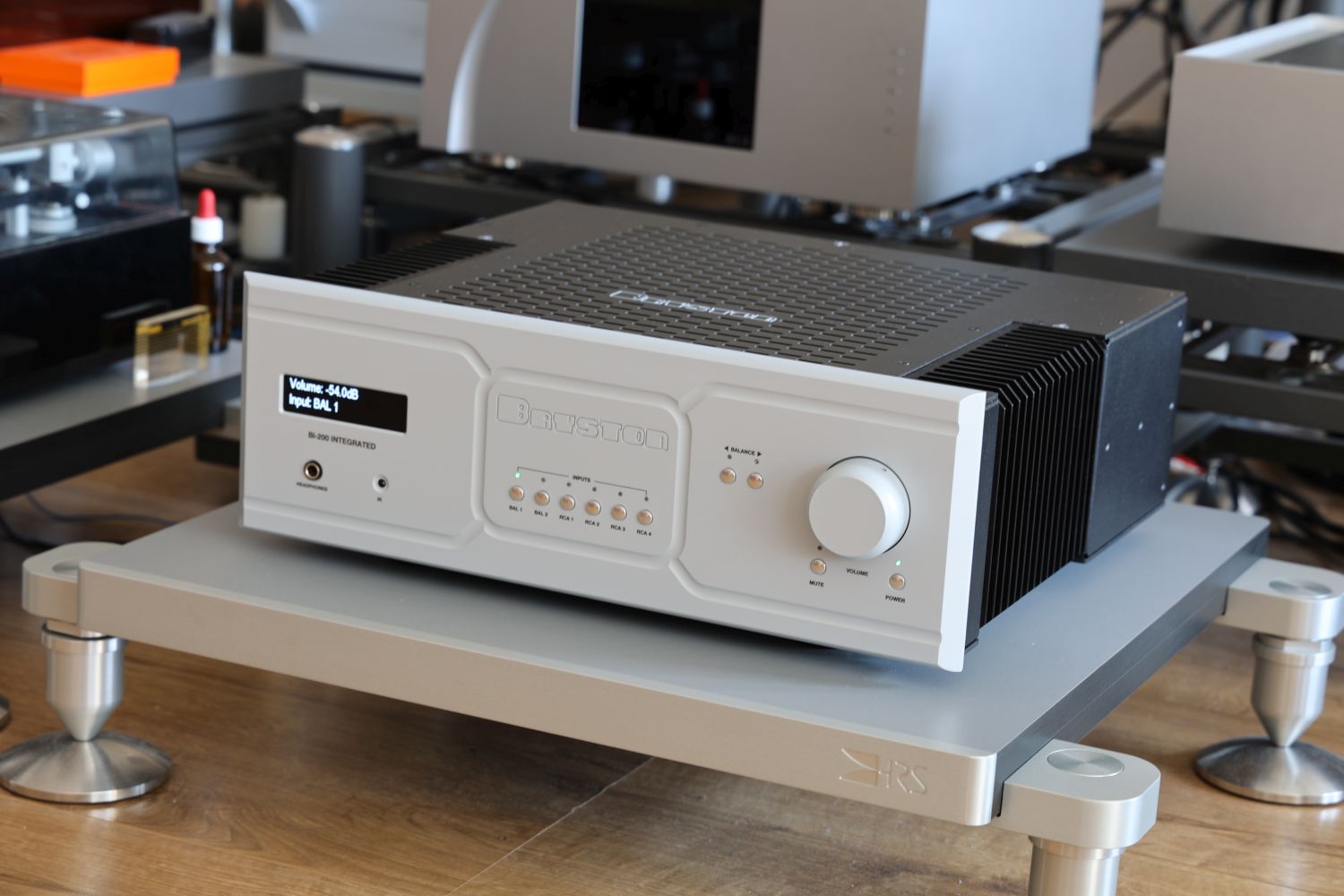
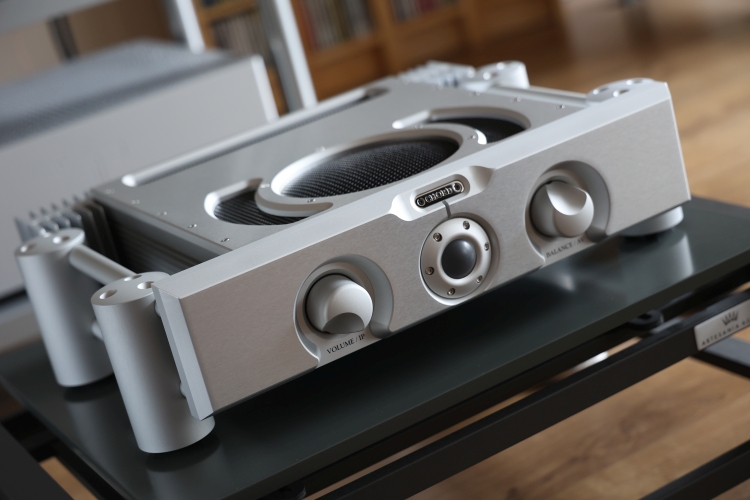
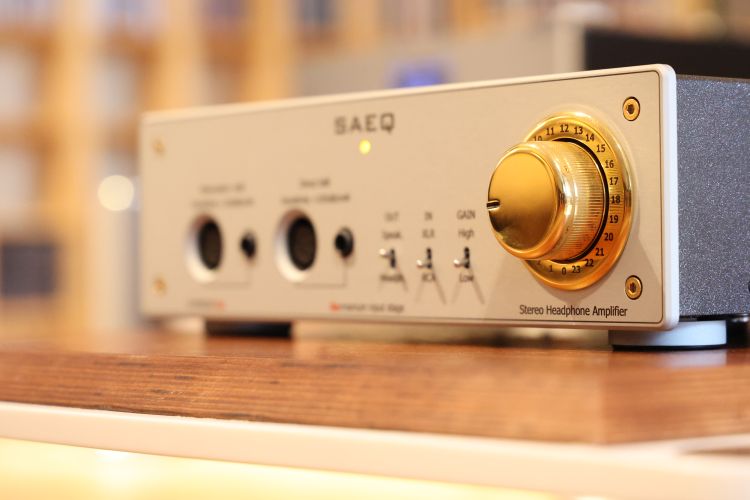
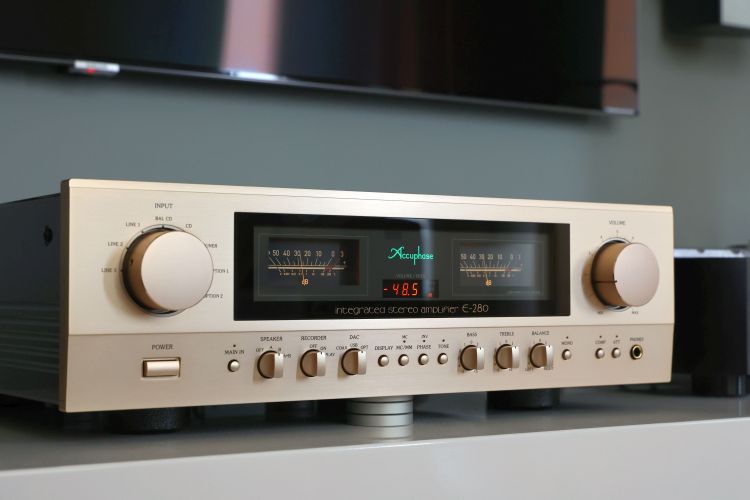
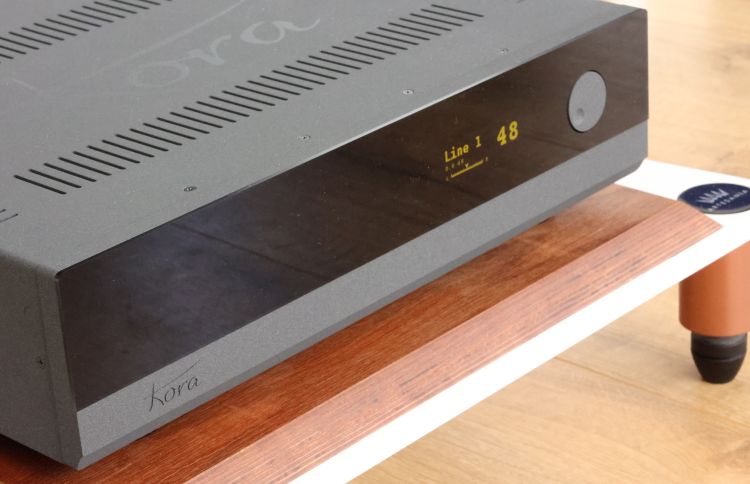
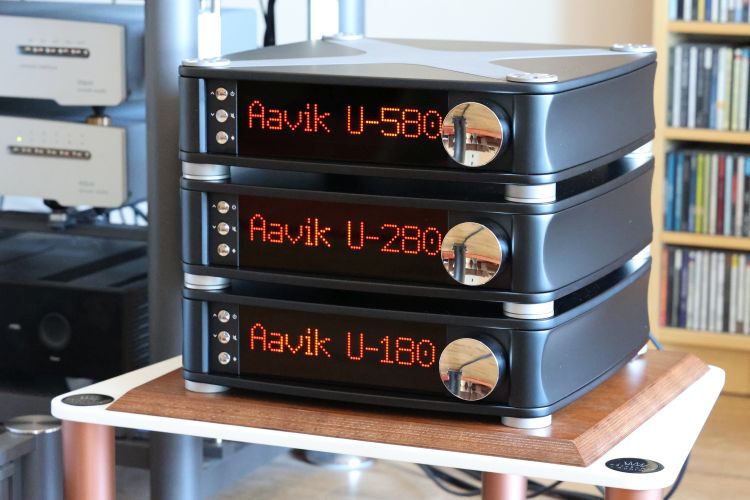
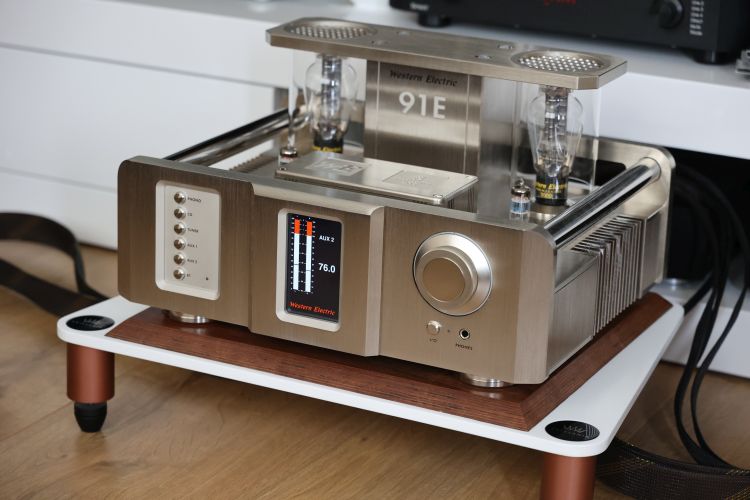
Hey Chris, another great review!
I wish there were more hifi gears reviews blogs like yours.
Have you ever heard the Fezz Audio Titania?
Thanks Alex:-)
Alas, I have not heard the Titania.
The Feliks-Audio SET is another product that looks interesting and also made in Poland. Have you heard?
Hi Robert, I’m afraid I’ve not heard anything by Feliks Audio.
Thanks. I’ll let you know if I get one to try.